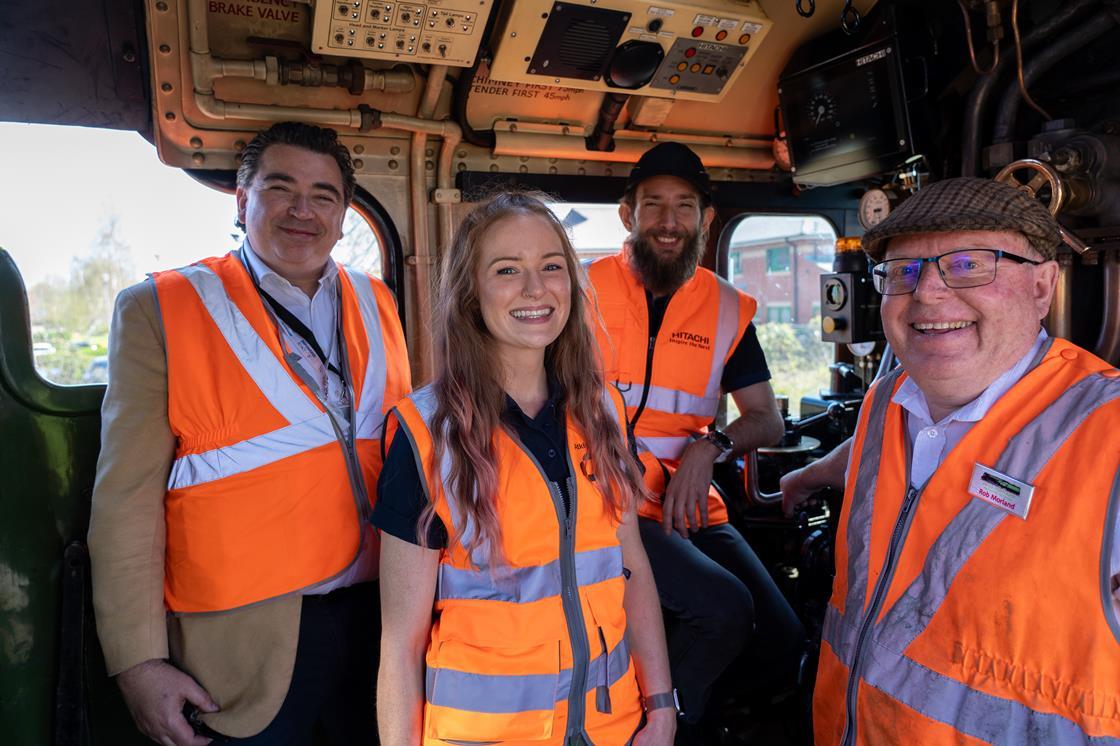A modern-built steam locomotive is leading the charge into the modern signalling era. Peppercorn Class A1 No. 60163 Tornado, completed in 2008 to honour an iconic 1940s design, has become the first steam engine in the world to run with ETCS digital signalling installed. From April 2025, Tornado has been chuffing proudly along Wales’s Cambrian Line, testing the European Train Control System (ETCS) as part of Network Rail’s East Coast Digital Programme. The gleaming brass of a classic locomotive now sits alongside tiny circuit boards, a blend of coal-fired history with the precision of 21st-century rail safety.
Digital signalling may sound modern, even futuristic, but its promise is simple: safer and more reliable journeys. Traditional railways have signals beside the track, telling drivers when to stop or proceed. ETCS moves all of that inside the cab. A clear display shows speed limits, route warnings and even automatic braking if the driver does not respond. For heritage steam services, it means these beloved engines can continue to steam along main lines without compromising on modern standards.
The trial on the Cambrian Line has not been without its challenges. Steam cabs are snug, soot-streaked spaces built for coal and fire, not for electronic gadgets. Top engineers from Hitachi Rail, AtkinsRealis and the A1 Steam Locomotive Trust have worked tirelessly to slot the ETCS equipment into Tornado’s cramped footplate. They have had to make sure the wiring and batteries can endure the heat of the firebox, the spray of Welsh rain, and the constant shake of a roaring loco. All the while, they have respected the engine’s heritage soul, preserving the coal-smoke aroma and that unmistakable hissing whistle.
Beyond the technical feats, this project holds deep significance for heritage railways across the UK. These historic lines are not just tourist attractions. They form a living museum that welcomes over a million visitors each year, offering a hands-on taste of Britain’s railway golden age. Together, they pump around £600 million into the UK economy annually, supporting local businesses, rural communities from Plymouth to Perth. The sight of a steam train ploughing through misty moorland or carving a path through wooded valleys speaks to the imagination, and it now comes with the reassurance of modern safety.
For drivers and crews, ETCS means a new set of skills. They learn to read the in-cab displays, to trust the system and to respond to its alerts, all without losing sight of the reediness that has guided steam operations for more than a century. On test runs, Tornado’s team measured performance, fine-tuned signal settings, and ensured that the locomotive’s classic lines did not disrupt the performance of the digital brains. Hitachi Rail has hailed it as “a world-first project testing tech in one of the most complex environments,” a fitting tribute to both the engineers of the Industrial Revolution and those of today’s digital age.
As the trial continues, the future of heritage steam looks brighter than ever. If all goes well, other preserved locomotives will follow Tornado’s lead, embracing ETCS so that steam services can run safely beyond their heritage lines and into the heart of the national network. Fans will still breathe in those “proper railway smells” — coal, oil and nostalgia — even as a discreet monitor guides them along every bend and gradient.
In many ways, this project mirrors the spirit of the original Victorian pioneers. Back then, Britain built a rail network that was the envy of the world, linking cities, villages and industries by a miracle of steam and steel. Today, a new revolution is under way, one that fuses digital precision with the poetry of steam travel. It shows that heritage railways can honour the past while adapting to a future that demands ever-higher standards of safety and efficiency.
Image credit www.railwaygazette.com
Original source https://www.railwaygazette.com/uk/etcs-tested-on-steam-locomotive/68663.article


